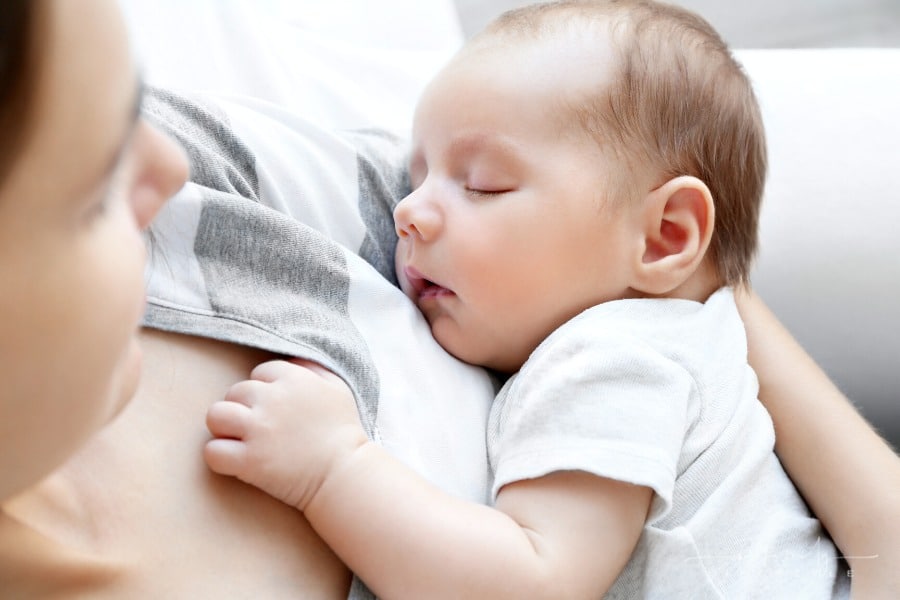How Infants Sleep Differently Than Adults
Sleep is a neurological imperative. The brain needs sleep to allow the mind to recharge, boost the immune system and fight diseases, and allow the mind and body to function correctly.
An infant’s sleep differs from an adult’s as their little body’s needs are still adjusting to the world.
With this, children’s sleep may be a challenge to the parents, and both may need some time to change.

The Human Sleep
Every human being experiences the circadian cycle, a natural, internal brain process that regulates a person’s sleep cycle and repeats every 24 hours. It involves the time of waking up and falling asleep and is usually influenced by factors such as daytime and nighttime as well as day-to-day activities and environmental factors.
Infants do not experience this yet as they are to develop their rhythm by the first months of their lives.
Adults’ Sleep In Comparison to Infants’ Sleep
In the absence of abnormal sleeping patterns, adults usually sleep around 8 hours on a regular, healthy basis. This pattern is consistent and scheduled during nighttime to allow the body and the brain to rest after a long day.
For babies, sleep can be different as they have different needs from adults, which could cause confusion and disturbances with the parent or guardian’s sleep.
Some of the differences between an infant’s and an adult’s sleep may include, but are not limited to, the following:
- Waking Periods Or Sleep Regression
For most adults, randomly waking up at night is uncommon; when they do, they usually go back to sleep quickly. However, many infants go through sleep regression ages. This includes shorter nap times, difficulty falling asleep, repeated moments of waking up during the night and usually fussing or crying.
Sleep regression is standard for children as their bodies adjust to the world, thus taking considerable mental energy from them and causing sleep disturbances.
The 3 to 6 months period of sleep regression is standard and will soon pass as the infant adjusts later.
- Length Of Sleep
The usual length of sleep for adults is 7 to 9 hours per night, as this is the normal circadian rhythm and the body’s natural need for rest. Infants need up to 11 to 19 hours of sleep every time. To allow the child to sleep better, there are baby sleeping bags available to help them with this.
This need for sleep decreases over time as the child grows up. Since infancy is the most critical time for the child’s growth and development, sleep is essential in developing their minds and bodies.
At the same time, their immune system is not as strong as adults, and sleep is an excellent contributing factor in developing their immune system.
However, it is essential to remember that babies do not sleep continuously, as they usually wake up every hour for their needs.
- Consistency
The average time for adults to go to bed is at 10 or 11 pm, and they usually wake up at 7 or 8 am. This routine is similar for many adults worldwide, as this is the socially accepted bedtime aside from the body’s normal sleep rhythm.
For infants, sleep periods can be inconsistent and erratic in the pattern. However, parents should not worry as this is a normal phenomenon they should expect for babies and can sometimes last up to 1 year.
One thing the parents or guardians can do is slowly develop a routine to help the baby adjust their sleep to consistency.
- Daytime Sleep
Most adults usually keep their sleep time at night in the normal circadian rhythm, although some may sleep during the daytime shortly. For infants, daytime sleep is retained until the child grows around 3-4 years old.
This is due to their need for prolonged sleep than adults and their bodies adjusting to sleep patterns postnatal. Hormones also slowly develop at this stage, contributing to the regular sleeping pattern.
- Experiencing REM Sleep
Rapid eye movement sleep is a phase in human sleep that involves fast movement of the eyes, low tone of the muscles, and an inclination to dream vividly. It has paradoxical brain activity or similarity of the sleeping brain to wakefulness and higher neural activity. Most adults experience REM sleep lasting 90 minutes and usually before waking up.
However, most infants experience REM sleep shortly after falling asleep. This is due to their forebrain exerting greater control over the brainstem and cortical regions, thus causing more REM sleep for infants.
Conclusion
There are differences in children’s and adults’ sleep, including waking periods and sleep regression, length of sleep, consistency, daytime rest, and how they experience rapid eye movement.
All of these differences that infants experience will eventually change and improve as time passes.
In the meantime, the best that a parent or a guardian can do is to create a better routine for the infant and be patient during sleep inconsistencies and with the child’s needs.


